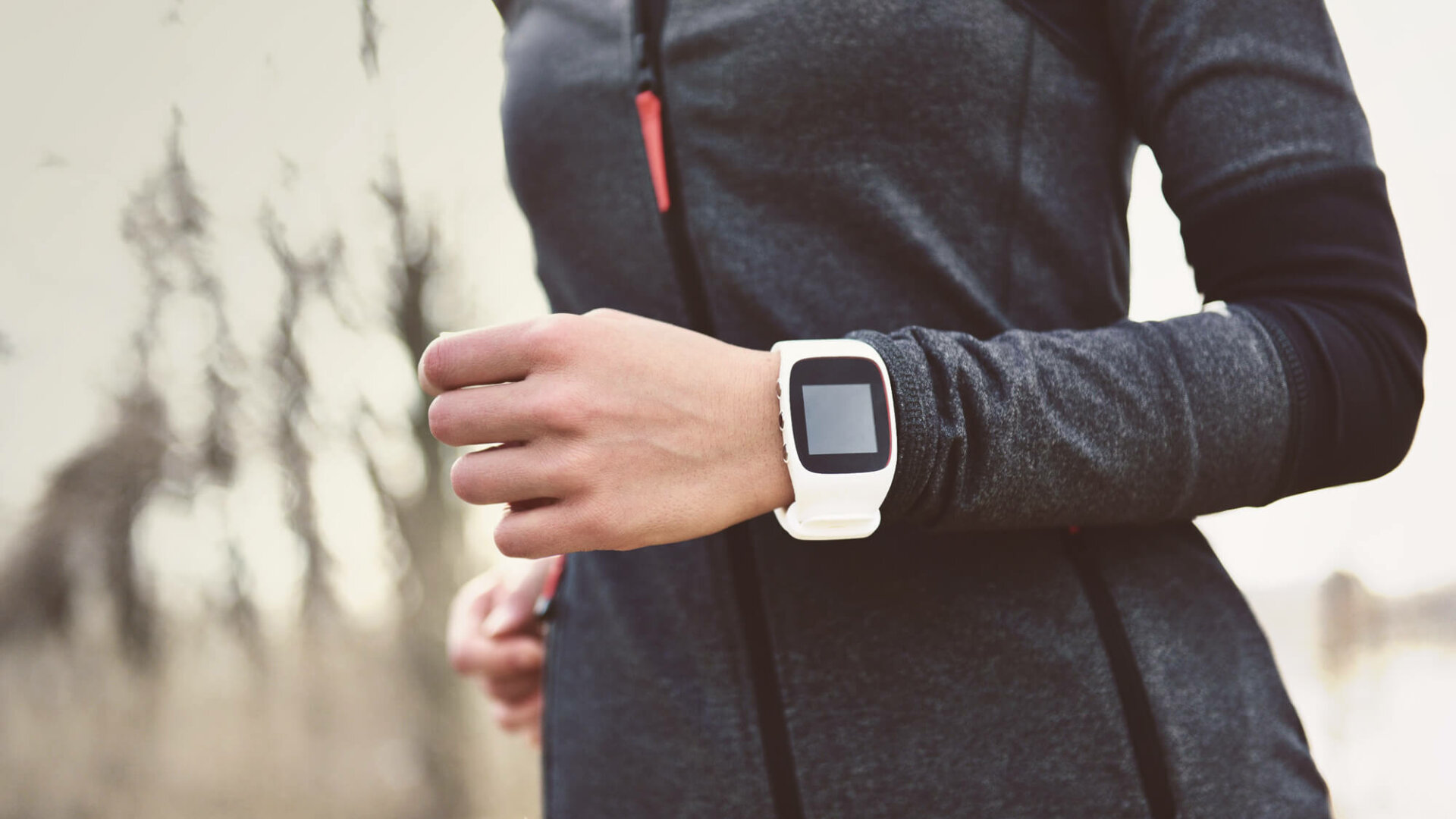Only a few years ago, it seemed that wrists were only for bracelets and watches. But nowadays our wrist devices tell us a lot more information than just the time of day. From step count and heart rate all the way to exertion level and recovery, wrist worn fitness devices are telling us more about ourselves than we ever knew was possible. Many companies have cashed in on this trend with FitBit and Apple (Apple Watch) probably having benefited the most thus far. There are now numerous companies who sell fitness tracking devices that provide varying levels of information about your physiology, but does the wealth of information from these devices really help us in the grand scheme of things? After all, gathering data just to have the data is kind of useless. The trick would be in knowing how to use the information to get healthier and improve fitness. So, let’s dive into whether these wearable fitness trackers live up to the hype or represent little more than a sleek looking wrist watch.
What Do They Measure?
Although different products may measure slightly different outcomes, there are a few things that all fitness trackers seem to measure. The first of those would be the number of steps you take per day. This has become increasingly more important to the general public given the research linking activity level and the onset of certain diseases. For example, studies have suggested that 10,000 steps per day should be the target for chronic disease prevention [1]. Other studies have suggested a more modest step count such as 6500-8500 steps/day for preventing cardiovascular disease [2]. Whatever the case, most fitness trackers seem to use step count as the hallmark of the information they provide.
In addition to step count, most fitness trackers attempt to quantify the number of “active minutes” we accumulate per day. There is of course an algorithm built into the tracker which decides what constitutes an active versus passive minute. But generally speaking, active minutes are accumulated when the tracker recognizes your activity as exercise. Simply getting up from the couch to grab a drink and sitting back down would not count as an active minute. This feature was no doubt built into these devices to give an objective look into how active a person really is throughout the day. After all, some research shows that spreading out exercise throughout the day may be more beneficial than one big session followed by sedentary behavior for the rest of the day [3].
Calorie count is another common feature of modern fitness trackers. Your basal metabolic rate is most likely determined by way of one of the classic BMR equations which takes into account your age, weight, height, and gender. But the total energy expenditure is calculated based on the amount of activity you accumulated throughout the day along with the intensity of that activity. This is, of course, something that many people are interested in today’s world. Knowing how many calories you burn helps you balance your caloric intake and manipulate your bodyweight as you see fit.
In addition to these hallmark measurements, several other data points may be generated depending on the brand and model of the tracker. Most will provide data on the quantity and quality of your sleep if worn to bed every night. Some will measure heart rate (Certain FitBit Models) or even Heart Rate Variability (Apple Watch), both of which can give you information about the intensity of a workout and recovery. Others attempt to quantify the intensity and recovery by compiling many different data points into a “strain” or “recovery” score (Whoop!). Some will even attempt to make suggestions as to whether you should work out or just rest on a particular day based on your individual data.
How to Make the Information Worthwhile
With all this great information, it can be easy to get swept up in the romance of these fitness trackers. But as mentioned above, we need to know how to use the information to benefit us.
First and foremost, you need to know which level of information would best suit your needs. If you are just starting out and looking for something to keep you motivated to be active, you don’t need to mess around with all the super high tech trackers on the market. A simple model that gives you the three hallmark measurements is going to be good enough. But still the question remains, how would you use those three data points to help you be a better you?
Well, the research has shown that step count and activity reminders which are featured in the FitBit brand trackers have a significant impact on exercise adherence and motivation [4]. When you can objectively look at how much you have moved throughout a given day, there is no more guesswork. Often times, you might think you are being more active than you really are and the step count works well for letting you know the truth. Also, as mentioned before, one big workout followed by sedentary behavior still isn’t the best thing for us health wise. We can get lulled into thinking we are active because we worked out for the day already, but ideally, we should try to remain active for the better part of our day. Many trackers will remind you to get up and move around every hour. This can help you create better habits if you are a beginner, or even give you a reality check if you are a fitness veteran.
Calorie count is something everyone wants to know with respect to their own expenditure. Knowing how many calories you burn lets you know how much food you can enjoy. Sure, we can use the old trick of tracking calories and bodyweight and doing the math, but it’s just so much sexier when a little machine tells you your number. However, the calorie count from your tracker may not be very accurate for you given the indirect nature of measurement. Since it is only using estimates for BMR and activity level quantification, your true caloric expenditure could be vastly different from the one displayed in the fitness tracker [5]. While it may not be accurate, it will still be consistent over time. You can use the calorie count to let you know whether you’ve been putting in more or less effort based on what it usually reads for caloric output. This could be especially useful in a dieting situation when effort and non-exercise associated thermogenesis tend to decrease.
Although they don’t all measure sleep patterns, it would be useful to have this data. Many people think that they sleep a certain number of hours or get a good night’s rest, but upon reviewing the information of a sleep tracking device, they are informed otherwise. Getting 7-9 hours of sleep is one thing, but making sure they are quality hours is another. The tracker will help you identify when there is an issue which can guide your investigation into how to optimize your sleep. This of course has major health and performance implications, which have been discussed on this site before.
If you are more serious about your fitness, then maybe upgrading to a fancier fitness tracker is worth the money. Tracking your heart rate is a good way to monitor your intensity during a workout, but it can also help you steer clear of overtraining. HR trackers will often give you a resting heart rate measurement upon waking up. If you find that this number changes abruptly for a few days, you can make necessary adjustments to your training to avoid ill effects. The same thing can be done with Heart Rate Variability if you happen to buy a tracker that features that data. HRV is a bit more involved but provides even more valuable information with respect to chronic fatigue and recovery.
Most of the other fancy features that certain brands provide have yet to be shown completely valid and reliable. Many companies will implement their own proprietary scores which tell you how hard you are working out and how well you are recovering. They even make recommendations as to whether you should work out on a given day. But as many strength coaches know, the data doesn’t always predict the outcome. Many times, you have your best training sessions on days when the data says you should have had your worst. But certainly, this information can help save you from yourself at times. Knowing how you are recovering and feeling on an objective basis will help you make smarter decisions about your training. This would hopefully lead to more productive training sessions and better progress over time.
Conclusion
As you can see, the fitness trackers everyone is wearing now days do provide a ton of information related to our health and fitness. But unless you are actively using that information, they aren’t doing much more than draining your wallet and telling you the time. However, if you can find a way to use the data they give you to motivate or inform your training practices then they can be a worthwhile investment. Whether you are a beginner looking for motivation to move more, or a fitness veteran who want a more in depth look at their physiology, there is a tracker out there for you. Once you get a handle on what the information is telling you and how to use it, you will begin to reap rewards of better training sessions and better overall health.
References
- Wilde BE, Sidman CL, Corbin CB. A 10,000-step count as a physical activity target for sedentary women. Research quarterly for exercise and sport. 2001 Dec 1;72(4):411-4.
- Ayabe M, Brubaker PH, Dobrosielski D, Miller HS, Kiyonaga A, Shindo M, Tanaka H. Target step count for the secondary prevention of cardiovascular disease. Circulation Journal. 2008;72(2):299-303.
- Bhammar DM, Angadi SS, Gaesser GA. Effects of fractionized and continuous exercise on 24-h ambulatory blood pressure. Medicine and science in sports and exercise. 2012 Dec;44(12):2270-6.
- Cadmus-Bertram L, Marcus BH, Patterson RE, Parker BA, Morey BL. Use of the Fitbit to measure adherence to a physical activity intervention among overweight or obese, postmenopausal women: self-monitoring trajectory during 16 weeks. JMIR mHealth and uHealth. 2015 Oct;3(4).
- Gusmer RJ, Bosch TA, Watkins AN, Ostrem JD, Dengel DR. Comparison of FitBit® Ultra to ActiGraph™ GT1M for assessment of physical activity in young adults during treadmill walking. The Open Sports Medicine Journal. 2014 Apr 24;8(1).

